Incredible Anatomical Human Machines – Two Fleshless Bodies Mystery
A. Sutherland - AncientPages.com - The so-called 'Anatomical Machines' are preserved in the underground crypt of the Sansevero Chapel, located in the historic center of Naples, Italy.
The 'Anatomical Machines' are the skeletons of a man and a woman in an upright position with the artery and vein systems almost perfectly intact.
Still today, after about two-and-a-half centuries, it remains a mystery what procedures and/or materials were used to obtain such exceptional preservation of the circulatory system.
Credit: Museo Cappella Sansevero
The 'Anatomical Machines' are the skeletons of a man and of a woman in the upright position with the artery and vein systems almost perfectly intact.
Stored in two glass cases, the pair represents one of the most impressive monuments that the human mind has ever conceived.
The 'Machines' were made by the doctor Giuseppe Salerno, an anatomist from Palermo, Italy under the direction of Raimondo di Sangro, Prince of Sansevero (1710-1771), alchemist and Grand Master of Neapolitan Masonic Lodge, philosopher, and poet, naturalist, and anatomist, astronomer, philanthropist.
 According to an anonymous document – the 'Short Note', which is considered a guide to the Palace and the Sansevero Chapel, a mysterious injection was involved in the procedure.
According to an anonymous document – the 'Short Note', which is considered a guide to the Palace and the Sansevero Chapel, a mysterious injection was involved in the procedure.
Was a technique known as 'anatomical injection of embalming substances', a part of this mysterious procedure?
It is said that Dr. Salerno injected a substance – perhaps based on mercury – into the two corpses.
The substance would have been created in a laboratory by the Prince of Sansevero and would allow the "metallization" of the blood vessels.
There is also another suggestion, namely, that the circulatory system was ingeniously reconstructed in these two amazing anatomical 'machines.'
In fact, the arteries and veins are reproduced with remarkable perfection, even the smallest vessels, even though knowledge of anatomy was not as precise as it is today.
In the 'Short Note', the 'machines' - kept in a room in the palace of the Prince of Sansevero, called "the Apartment of the Phoenix" – are described in detail.
Left: The crania were sawn open so that the complex network of blood vessels present in the cranial cavity could be inspected; Right: The outer surface of the female's cranium is covered with blood vessels. Credit: R. Peters - The American Institute for Conservation of Historic & Artistic WorksMuseo Cappella Sansevero
At the feet of the woman, the guide states, there was placed "the tiny body of a fetus", alongside which there was even the open placenta, connected to the fetus by the umbilical cord.
Some of the vital organs are present but also seem misplaced. Although the organs were not sampled, visual examination suggests that they may have been made with a wood core coated with wax.
Left: The male has only 16 teeth; some have longitudinal cracks; Right: The female is mounted onto a plinth, attached to it from the feet. Credit: R. Peters - The American Institute for Conservation of Historic & Artistic WorksMuseo Cappella Sansevero
The two anatomical studies were moved to the Chapel and saved from destruction or loss long after the death of the Prince.
The remains of the fetus were still visible up to a few decades ago until they were stolen. According to popular belief, Raimondo di Sangro "had two of his servants killed," a man and a woman, and embalmed their bodies.
In Greek mythology, Phoenix - a long-lived bird that is cyclically regenerated or reborn - is the associated with the myth of resurrection and immortality.
Was a technique known as 'anatomical injection of embalming substances' a part of this mysterious procedure? Credit: R. Peters - The American Institute for Conservation of Historic & Artistic WorksMuseo Cappella Sansevero
Were these fleshless bodies the objects of di Sangro's studies? He was often portrayed as a 'misunderstood man, ahead of his time.
Was the 'Apartment of the Phoenix' used intentionally, or was the name 'Phoenix' chosen accidentally?
These questions may seem rather difficult to answer. Due to the lack of written documentation on the early history of the anatomical machines, the mystery will probably never be solved.
Until recently, many Neapolitans believed that the models were of his servant and a pregnant woman, into whose veins an artificial substance was injected under pressure, but the latest research has shown that the models are artificial.
Credit: Museo Cappella Sansevero
No evidence indicated that the vessels of the cadavers used to make the 'human machines' were injected with embalming substances.
Di Sangro destroyed his own scientific archive before he died. After his death, his writings, formulae, laboratory equipment, and results of experiments were destroyed, probably under threat of ex-communication by the Church due to Di Sangro's involvement with Freemasonry and alchemy.
Updated on May 25, 2022
Written by – A. Sutherland AncientPages.com Senior Staff Writer
Copyright © AncientPages.com All rights reserved. This material may not be published, broadcast, rewritten or redistributed in whole or part without the express written permission of AncientPages.com
Expand for referencesMore From Ancient Pages
-
 Gryla: Cannibalistic, Evil Troll And Her Sons ‘Yule Lads’ – In Icelandic Folklore
Christmas Traditions | Dec 23, 2024
Gryla: Cannibalistic, Evil Troll And Her Sons ‘Yule Lads’ – In Icelandic Folklore
Christmas Traditions | Dec 23, 2024 -
 Unexplained Historical Mass Disappearances – Where Did They Go? – Part 2
Featured Stories | Jun 4, 2019
Unexplained Historical Mass Disappearances – Where Did They Go? – Part 2
Featured Stories | Jun 4, 2019 -
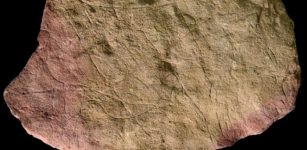 Our Early Ancestors Probably Created Intricate Artwork By Firelight
Archaeology | Apr 21, 2022
Our Early Ancestors Probably Created Intricate Artwork By Firelight
Archaeology | Apr 21, 2022 -
 Strange History Of Stele Of Ankh-ef-en-Khonsu – ‘Stele Of Revealing’ Gave Birth To Thelema, A New Religion
Artifacts | Apr 3, 2018
Strange History Of Stele Of Ankh-ef-en-Khonsu – ‘Stele Of Revealing’ Gave Birth To Thelema, A New Religion
Artifacts | Apr 3, 2018 -
 Rare 2,700-Year-Old Seal Of Biblical King Jeroboam II’s Servant Confirmed Authentic
Artifacts | Jan 18, 2021
Rare 2,700-Year-Old Seal Of Biblical King Jeroboam II’s Servant Confirmed Authentic
Artifacts | Jan 18, 2021 -
 Nobel Prize: Svante Pääbo’s Ancient DNA Discoveries Offer Clues As To What Makes Us Human
DNA | Oct 12, 2022
Nobel Prize: Svante Pääbo’s Ancient DNA Discoveries Offer Clues As To What Makes Us Human
DNA | Oct 12, 2022 -
 What Was The Extreme Ritual Of Sokushinbutsu?
Ancient Traditions And Customs | Jun 20, 2018
What Was The Extreme Ritual Of Sokushinbutsu?
Ancient Traditions And Customs | Jun 20, 2018 -
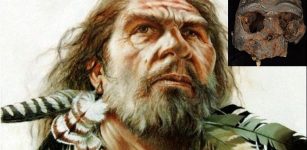 Mysterious Denisovans – New Study Offers New Evidence
Fossils | Mar 25, 2021
Mysterious Denisovans – New Study Offers New Evidence
Fossils | Mar 25, 2021 -
 2,500-Year-Old Olmec Related Mexican Cave Paintings Are Now Restored And Protected
Civilizations | Sep 18, 2015
2,500-Year-Old Olmec Related Mexican Cave Paintings Are Now Restored And Protected
Civilizations | Sep 18, 2015 -
 Ancient City Of Aizanoi: Statue Heads Of Greek Gods Unearthed In Excavations
Archaeology | Nov 23, 2021
Ancient City Of Aizanoi: Statue Heads Of Greek Gods Unearthed In Excavations
Archaeology | Nov 23, 2021 -
 Amazon Forest Communities Disappeared Long Before 1492 Arrival Of Europeans
Archaeology | Jun 19, 2019
Amazon Forest Communities Disappeared Long Before 1492 Arrival Of Europeans
Archaeology | Jun 19, 2019 -
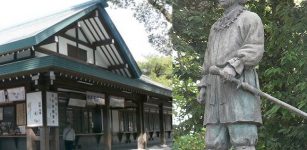 Mystery Of The Kusanagi Treasure: The Legendary Sword
Artifacts | Feb 8, 2016
Mystery Of The Kusanagi Treasure: The Legendary Sword
Artifacts | Feb 8, 2016 -
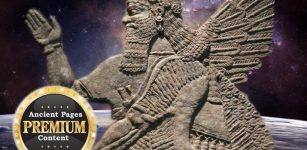 ‘Impossible’ Advanced Ancient Technology In Mesopotamia – Evidence Of Other-Worldly Interaction?
Ancient Mysteries | May 24, 2021
‘Impossible’ Advanced Ancient Technology In Mesopotamia – Evidence Of Other-Worldly Interaction?
Ancient Mysteries | May 24, 2021 -
 Wreckage of The French Steamship That Sank In Atlantic In 1856 Found Off The Coast Of Massachusetts
Underwater Discoveries | Sep 23, 2024
Wreckage of The French Steamship That Sank In Atlantic In 1856 Found Off The Coast Of Massachusetts
Underwater Discoveries | Sep 23, 2024 -
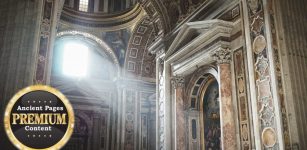 Unusual Relic That Mysteriously Disappeared From The Vatican
Ancient Mysteries | Nov 8, 2018
Unusual Relic That Mysteriously Disappeared From The Vatican
Ancient Mysteries | Nov 8, 2018 -
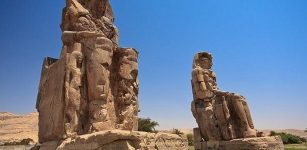 Colossi Of Memnon: Gigantic Stone Statues Guarding The Temple Of Pharaoh Amenhotep III
Civilizations | Jul 13, 2016
Colossi Of Memnon: Gigantic Stone Statues Guarding The Temple Of Pharaoh Amenhotep III
Civilizations | Jul 13, 2016 -
 Ancient Petroglyphs In Toro Muerto Are Not What We Thought – Archaeologists Say
Archaeology | May 24, 2024
Ancient Petroglyphs In Toro Muerto Are Not What We Thought – Archaeologists Say
Archaeology | May 24, 2024 -
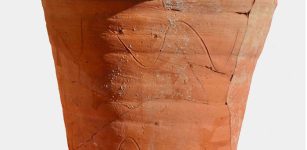 Ancient Roman Portable Toilets Studied By Scientists
Archaeology | Feb 11, 2022
Ancient Roman Portable Toilets Studied By Scientists
Archaeology | Feb 11, 2022 -
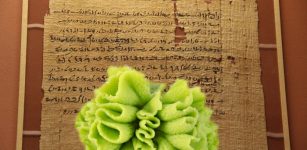 Wasabi Plant Can Save Ancient Bio-Deteriorated Papyrus
Scripts, Paintings & Inscriptions | Apr 4, 2024
Wasabi Plant Can Save Ancient Bio-Deteriorated Papyrus
Scripts, Paintings & Inscriptions | Apr 4, 2024 -
 Ancient Mysteries Of Chicago: Is The Puzzling Waubansee Stone A Neglected Pre-Columbian Artifact?
Artifacts | Mar 4, 2017
Ancient Mysteries Of Chicago: Is The Puzzling Waubansee Stone A Neglected Pre-Columbian Artifact?
Artifacts | Mar 4, 2017





